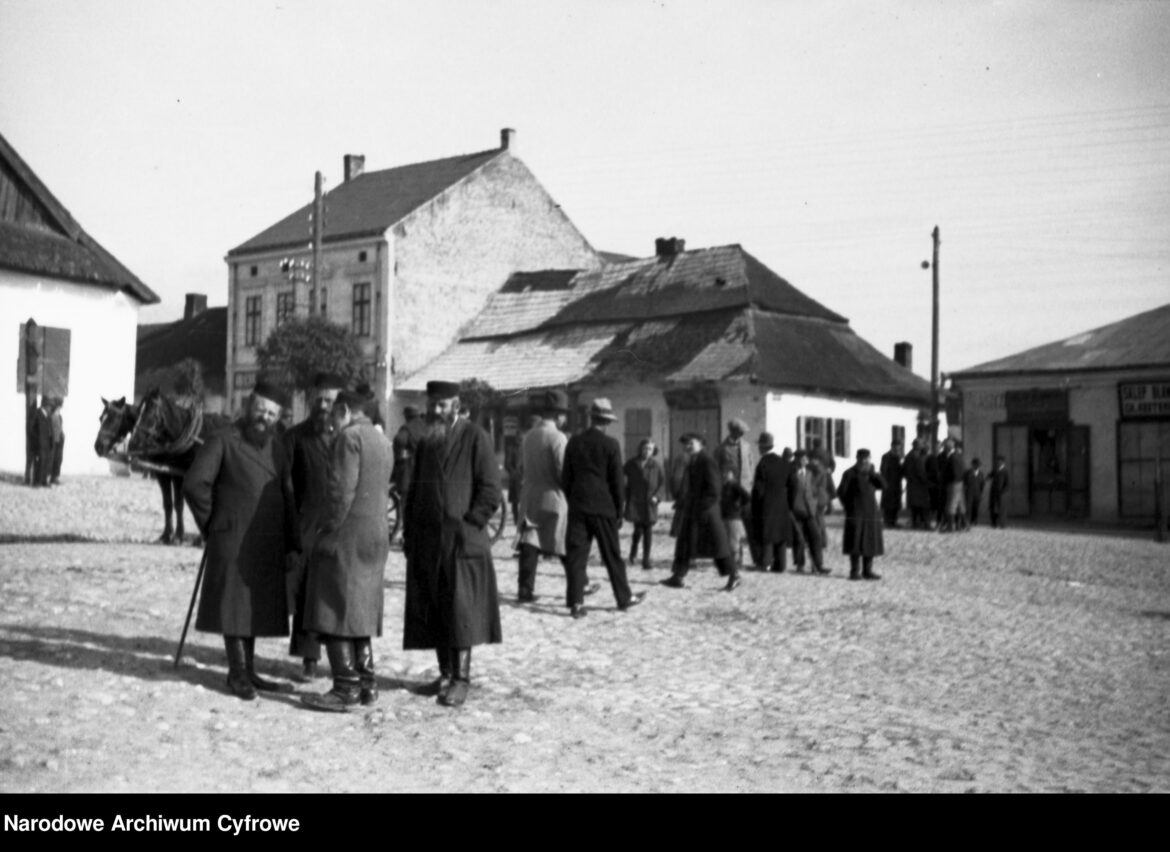Today, the average Pole associates the Jewish population with a typical urban or town community. The image of a trader and craftsman appeared in many interwar photographs with Jews standing in front of their shops, often in the market square of a small town known as shtetl in Yiddish. Poles also associate them with peddling and door-to-door trade in the villages. Such characters repeatedly appeared in Polish nineteenth-century literature, for example, Szymszel from Maria Dąbrowska’s “Nights and Days”, who visited the Serbinów estate for “rags, patches, chicken’s feet”.
People know less about Jews who lived in Polish villages. Researchers estimate that 1/3 or 1/4 of the Orthodox Jews lived in rural areas in the second half of the 18th century. Their highest percentage was recorded in Mazovia and Podolia regions with about 40% and over 30%, respectively. Other popular areas in this respect are: Podlasie and Ruthenia. In general, a certain regularity can be noticed – the further east, the more Jewish settlers lived in the villages. Their number also increased where the population lived and worked in typical folwarks (manors).
Agriculture was rarely their only occupation. In addition to trade and crafts, they mainly dealt with the lease of land, i.e. the lease of mills and inns. The first two professions (property owners and lessees) were profitable but innkeepers were of lower status.
In many regions of the Polish–Lithuanian Commonwealth, there was a propination compulsion which consisted in the necessity to stock up and sell only alcoholic beverages produced by a particular manor. Using “someone else’s” product was treated as one of the most serious punishable offenses. The innkeepers even took oaths aimed at limiting the loss of income of the manors or parish priests.
The Jewish population lived in the settlements belonged to the kehillas (Jewish communities). In Mazovia, one of the most considerable kehilla was located in Węgrów with 21 subordinated Jewish villages. Sometimes, przykahaleks (a branch of the kehilla mother community) emerged, like in Ostrowia Mazowiecka, which was in charge of 23 such rural settlements.





